| Pleuretra lineata: focus plane on the dorsal side of a creeping animal. Visible is the long dorsal antenna. (2) |
| |
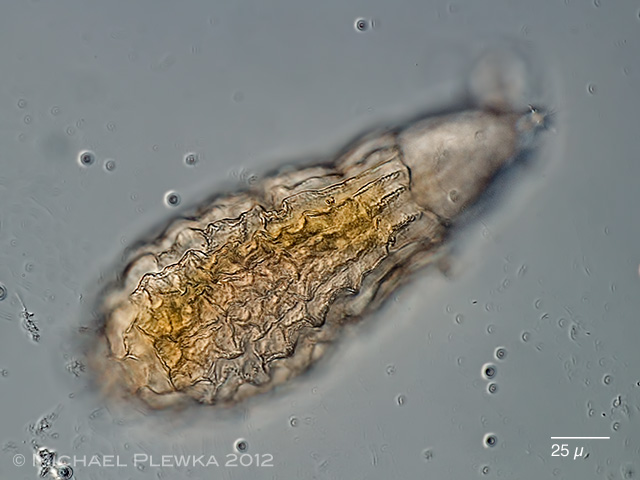 |
| Pleuretra lineata: dorsal integument of a creeping animal. (1) |
| |
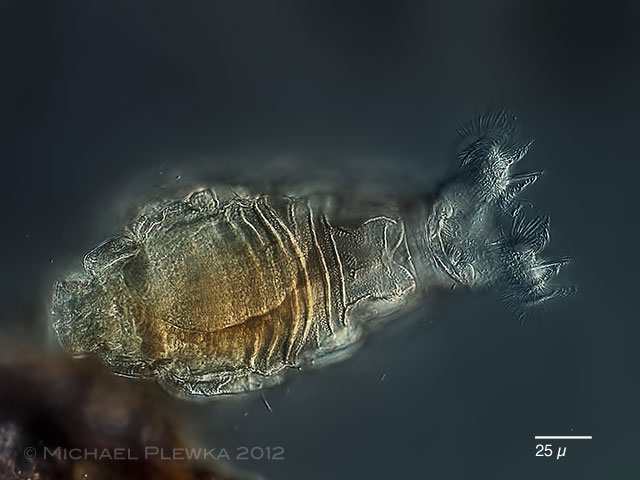 |
| Pleuretra lineata: whirling, focal plane on the ventral integument with transversal folds. Because of the ventral transversal folds Pleuretra lineata maybe confused with Macrotrachela papillosa. But M. papillosa has 3 toes (instead of four) and protrusions on the ventral integument of the trunk. (1) |
| |
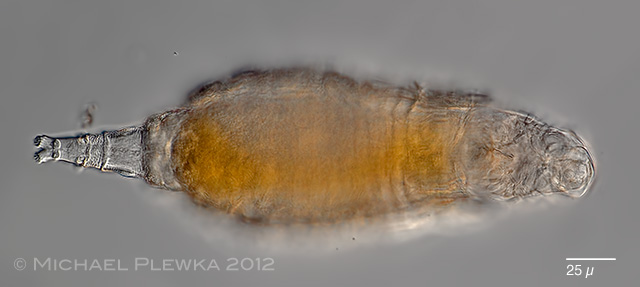 |
| Pleuretra lineata: creeping specimen, focal plane on the foot with 4 toes. (1) |
| |
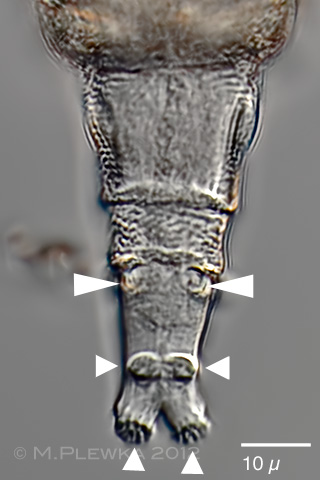 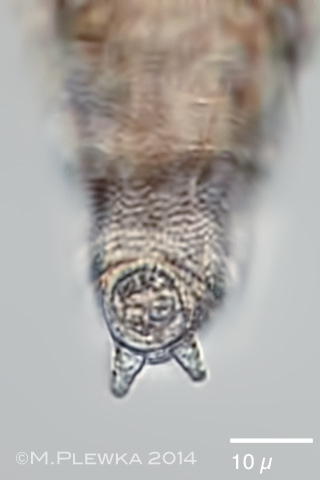 |
| Pleuretra lineata: left: crop of the above image, focus on the foot with 4 toes (white triangles) and the spurs (white arrowheads) (1). Right image: foot with granulated integument, ventral view. Short and blunt-ended spurs. |
| |
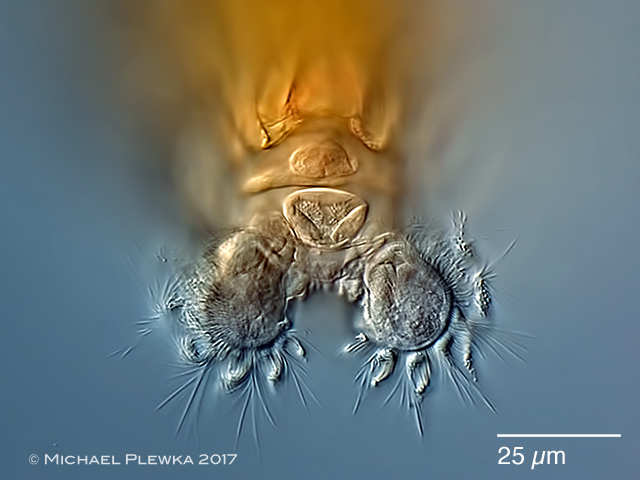 |
| Pleuretra lineata: whirling, frontal view; focal plane on the trochal discs and the rostrum with characteristic threepartite convex walls. There are some folds in the sulcus. (6) |
| |
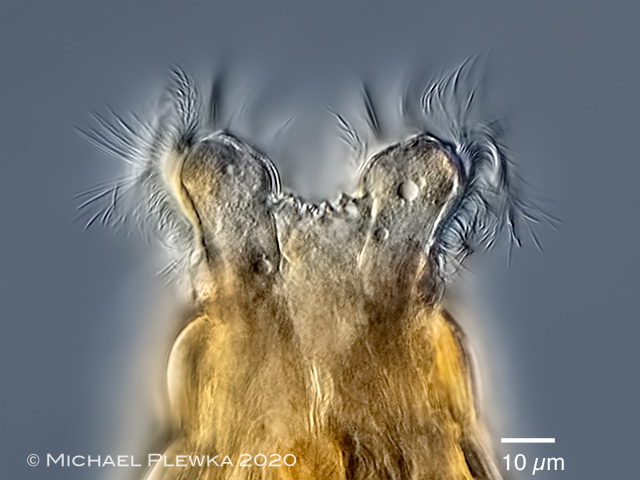 |
| Pleuretra lineata: whirling. This optical transect of the corona of a specimen from (7) shows the folds in the sulcus. This is in contrast to Pleuretra sp. 1, a morphotype with a ligula in the sulcus. |
| |
 |
| Pleuretra lineata: whirling; the ventral transversal folds appear as a sawtoth-like pattern in this lateral view. Also visible is the long and conspicuous dorsal antenna. (4) |
|
|
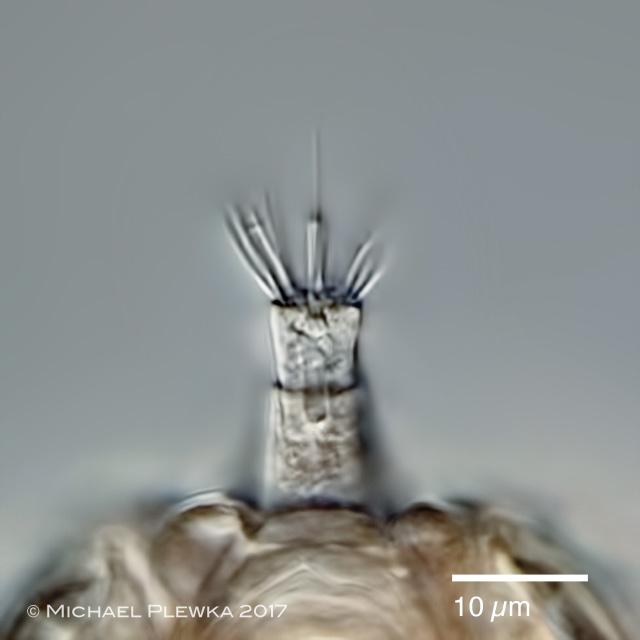 |
| Pleuretra lineata: the dorsal antenna has two segments which are partly contracted like a telescope in this image. (4) |
| |
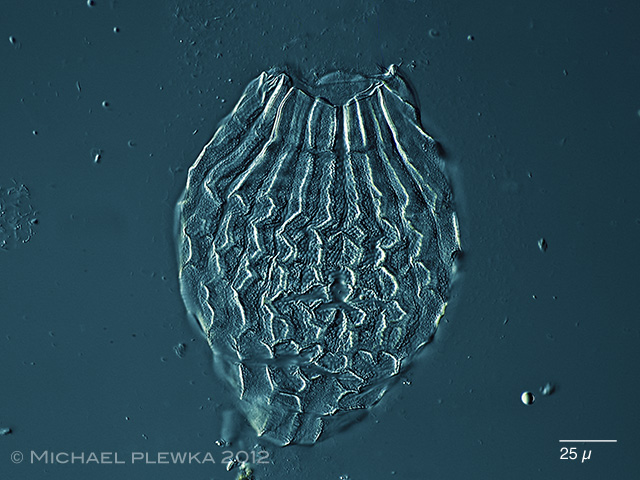 |
| Pleuretra lineata: integument of a macerated specimen (1) |
|
|
| Pleuretra lineata: focus on the integument (left: dorsal integument, right: ventral integument with characteristic transversal folds) (1) |
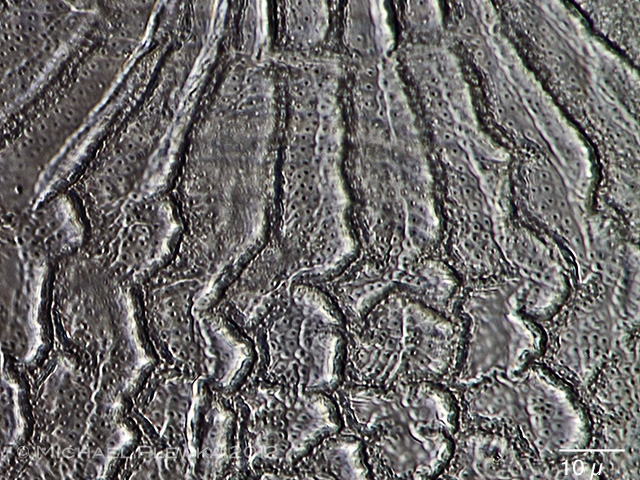 |
| Pleuretra lineata: The integument consists of a syncytial epidermis. The "pores" are actually invaginations of the plasmalemma of the syncytium (1) |
| |
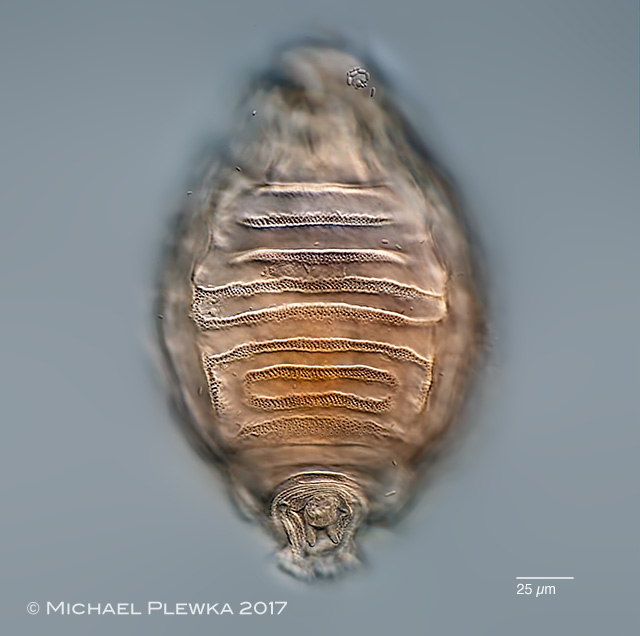 |
| Pleuretra lineata: integument of the ventral side with transversal folds and pores. (5) |
| |
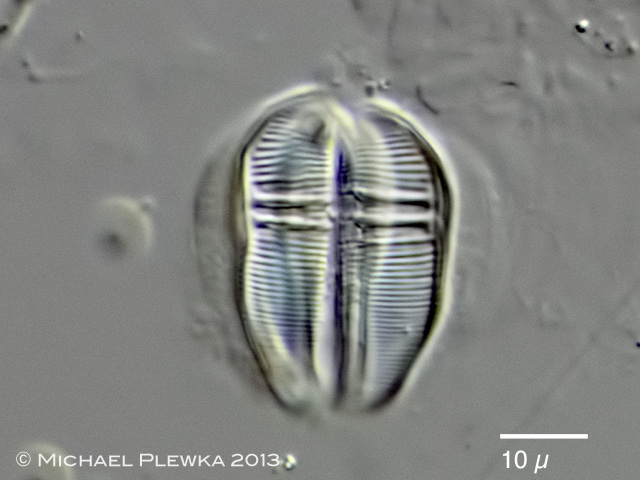 |
| Pleuretra lineata, ramate trophi, dental formula 2+1/1+2. (1) |
| |
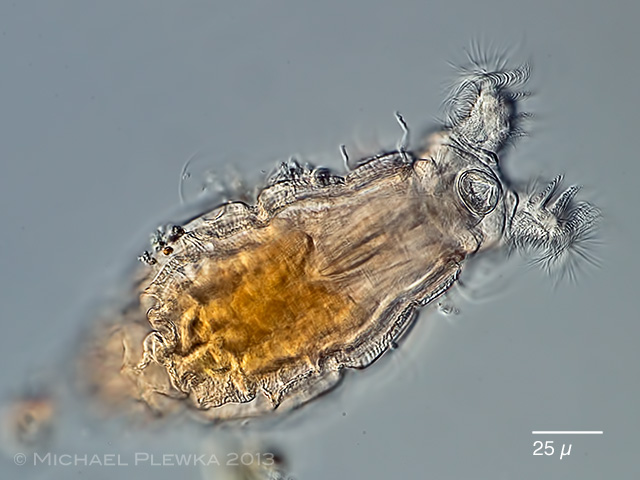 |
| Pleuretra lineata, whirling, dorsal view, focus plane on the upper lip (2) |
| |
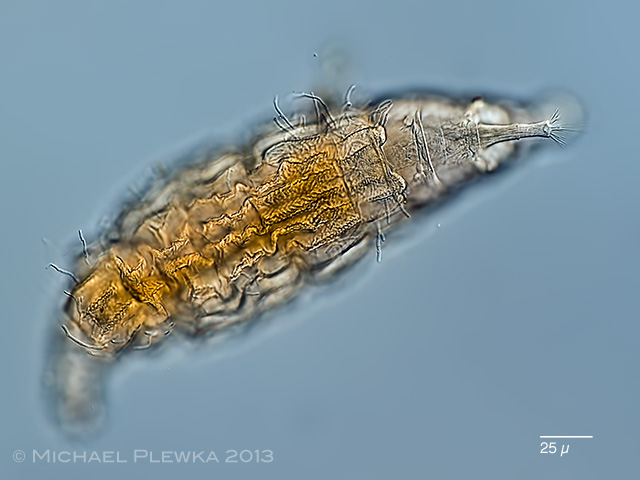 |
| Pleuretra lineata, creeping animal. Sometimes the integument shows some hair-like structures. See also the following images.(2) |
| |
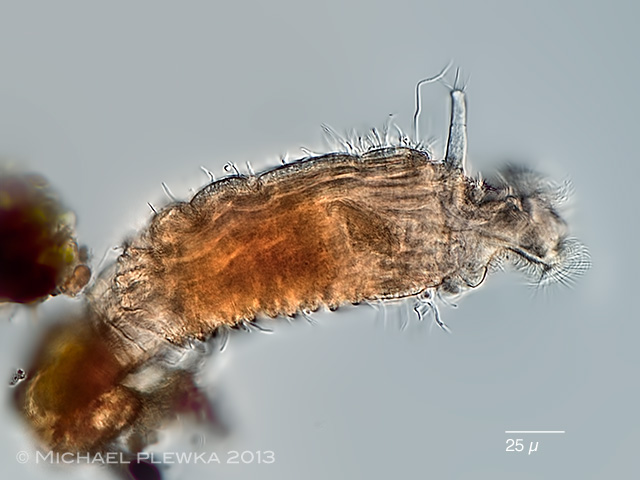 |
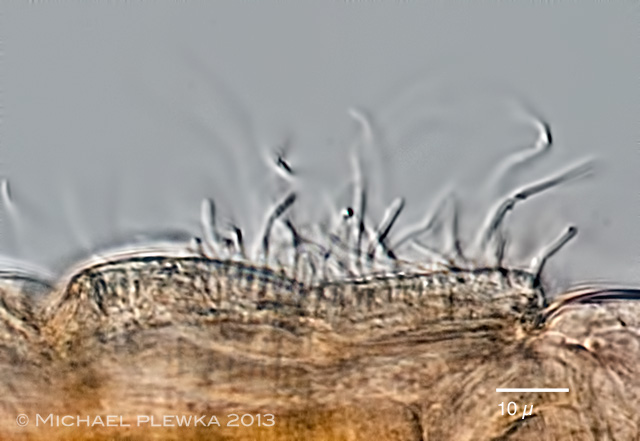 |
| Pleuretra lineata, detail of the hair-like structures (28.06.2013). |
| |
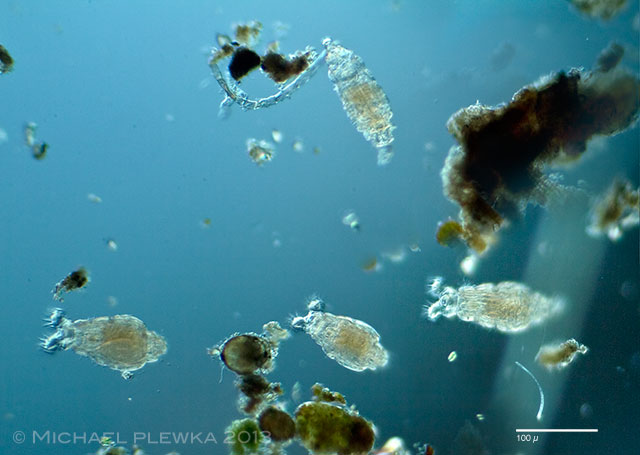 |
| About 5 hours after soaking the dry moss with water P. lineata can be found in high densities in the sample which measures up to 50 individuals / ml (2). P. lineata is a species that starts whirling shortly after immersion, thus not wasting time to get new energy to reproduce (2). (Another species starting whirling very shortly after being disturbed is Macrotrachela quadricornifera) |
| |
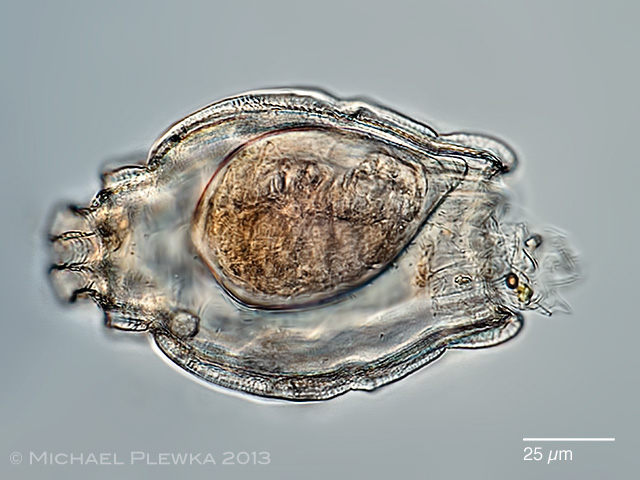 |
| Pleuretra lineata, dead specimen with egg (with alive content) (4). In contrast to some Lecane species, where the resting eggs typically remain in the dead bodies of the mother until the corpse desintegrates it is not clear if the shown phenomenon is typical for Pleuretra. |
|
|
| Pleuretra lineata, egg. |
| Differential diagnosis: because of the transversal folds Pleuretra lineata maybe confused with Macrotrachela papillosa, M. papillosa has 3 toes and protrusions on the integument of the trunk /rump.. |
| |
| Location: Massa, Tuscany, Italy, wall (1); Germany, Hattingen, Bredenscheid, bikepath, bridge, moss (2); Anhausen, Bavaria (3); Gloer dam, EN-district, Germany (4); Speikboden (altitude 2400m), Tauferer Ahrntal, South Tirol, Italy (5); Hattingen Oberstüter; Grosse Kuhstr.; wall (6); Hattingen Felderbachtal, hike path (7) |
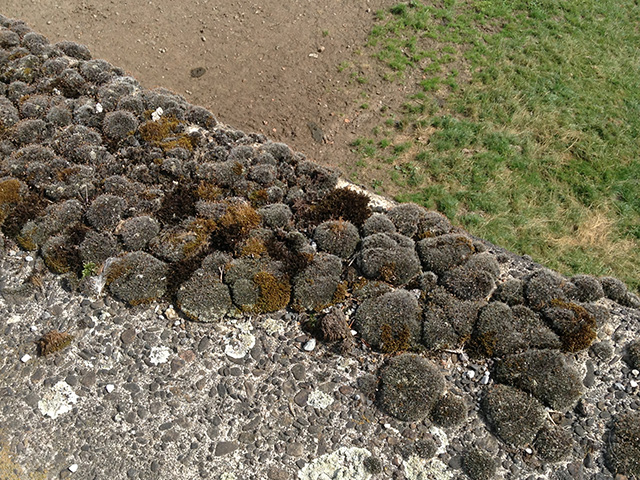 |
| Habitat: moss, soil (1) ; dry moss, probably a Grimmia pulvinata-Tortula muralis-community, with exposition to high sun radiation (up to 45 degrees Celsius, see above image ) (2,3,4). This is the typical habitat for this species. I have found the association between the rotifer and these very common mosses more than 10 times, so one may wonder why this species has been described only in 1962. Habitat (5):Dry moss on rocks (Andreaea rupestris), together with A. tuberculosa, A. vaga var. rhomboidea, Pleuretra lineata, Dissotrocha scutellata, dry moss on wall (6); liverwort (Metzgeria sp.) (7); |
|
| Date: coll.: 11.10.2012, det.: 19.10.2012 (1); 28.6.2013 (2); 12.10.2013 (4); coll. 7.10.2014, img 21.10.2014. (5); 19.03.2017 (6); 20.07.2020 (7) |
|
|
|
|